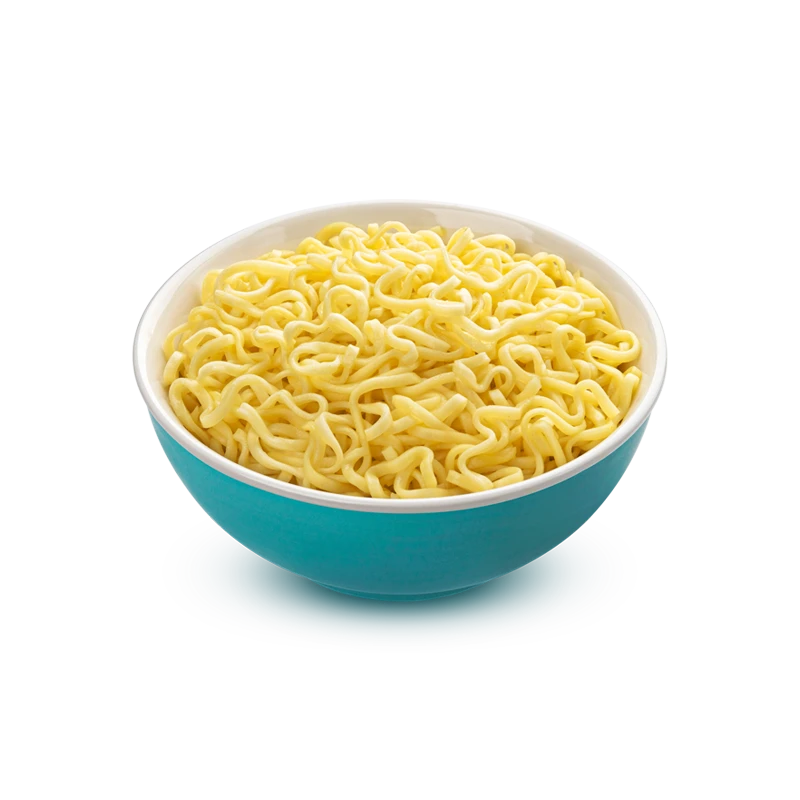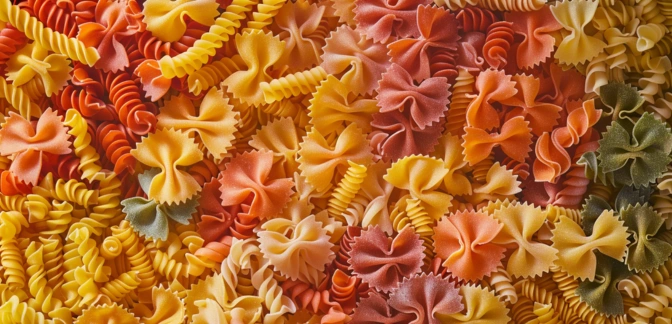Ramen Noodles — Nutrients, Health Benefits, And Shopping Tips

Written by Listonic Team
Last update on September 6, 2024
Ramen noodles nutrients
Nutrition facts
Amount per 100 g
Calories
🔥 436 kcal
| Nutrition per: 100 g | Value | % Daily Value* |
|---|---|---|
| Carbs | 63 g | 22.91% |
| Fiber | 3 g | 10.71% |
| Sugars | 1 g | 2% |
| Glycemic Index | 55 | - |
| Protein | 9 g | 18% |
| Sodium | 1940 mg | 84.35% |
| Total Fat | 17 g | 21.79% |
*The % of Daily Value (DV) tells you how much a nutrient in a serving of food contributes to a daily diet. 2,000 calories a day is used for general nutrition advice.
55
🟢 Low Glycemic Index
1 g
🍏 Low Sugar Content
Ramen noodles facts & tips
Health benefits
- Convenient and quick to prepare, making them a popular choice for a fast meal.
- Provides carbohydrates for quick energy.
Health risks
- High sodium content in most instant ramen noodles, particularly in the seasoning packets, which can contribute to hypertension and increased cardiovascular risks.
- Low nutrient density as ramen noodles are typically made from refined flour, offering limited vitamins or minerals compared to whole grain options.
- High calorie content particularly when ramen is prepared with added oils or high-calorie toppings, which can contribute to weight gain if consumed frequently.
- Potential for MSG and other additives in the seasoning packets, which may cause adverse reactions in sensitive individuals.
- Risk of overconsumption due to its convenience and palatable nature, leading to excessive calorie and sodium intake if not mindful of portion sizes.
How to choose ramen noodles
Ramen noodles should be uniformly straight and free of any cracks or breaks. The packaging should be sealed to keep the noodles fresh and prevent exposure to humidity.
Avoid ramen noodles that are broken or have a damp smell, as these are signs that the noodles have been exposed to moisture. Packages that have holes or are not properly sealed should also be avoided, as they may lead to stale or spoiled noodles.

How to store ramen noodles
Ramen noodles should be stored in a cool, dry place, preferably in their original packaging. Proper storage keeps them fresh and ready to use for up to a year.
Moisture and air exposure can cause noodles to lose quality. Avoid storing near heat sources, and ensure the package is tightly sealed. Proper storage maintains their texture and prevents clumping.
✅ Extra Tip
How long do they last?
Ramen noodles can last for 1-2 years when stored in an airtight container in a cool, dry place. Proper storage helps maintain their quality and flavor, ensuring a quick and easy meal. Always check the expiration date on the packaging for the best quality.
What to do with leftovers?
Leftover ramen noodles can be used in a variety of savory and creative dishes. Toss them with your favorite sauce for a quick meal, or mix them into a stir-fry with vegetables, tofu, or chicken. Ramen noodles are also great when used as a base for a cold noodle salad with fresh vegetables, herbs, and a tangy dressing.
Use ramen noodles in a ramen noodle soup by simmering them in broth with vegetables, meat, and spices, or mix them into a ramen noodle frittata by stirring the cooked noodles into beaten eggs and frying until set. If you have a lot of ramen noodles, consider making a batch of ramen noodle pancakes by mixing the cooked noodles with eggs, scallions, and soy sauce, then frying until crispy. Ramen noodles can also be used as a topping for salads or grain bowls, adding a crunchy texture, or mixed into a ramen stir-fry with your favorite ingredients. For a quick snack, enjoy ramen noodles with a sprinkle of seasoning, or toss them with soy sauce and sesame oil.
👨⚕️️ Medical disclaimer
Discover products from other categories
Listonic Team
Fact-checked
Our editorial team checked this article to make sure it was accurate at the time of publishing it.
Get the top-rated shopping list app on your phone!







